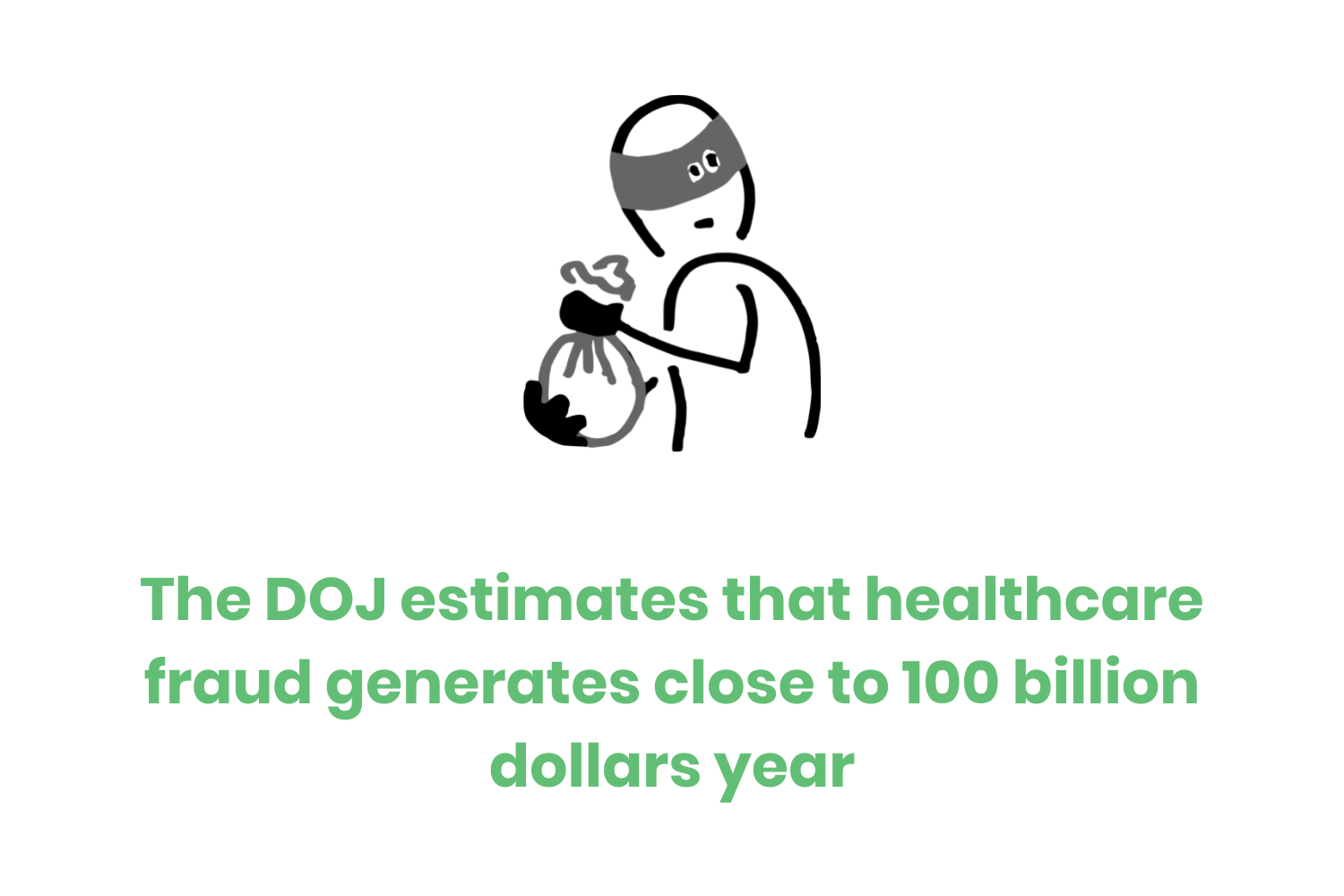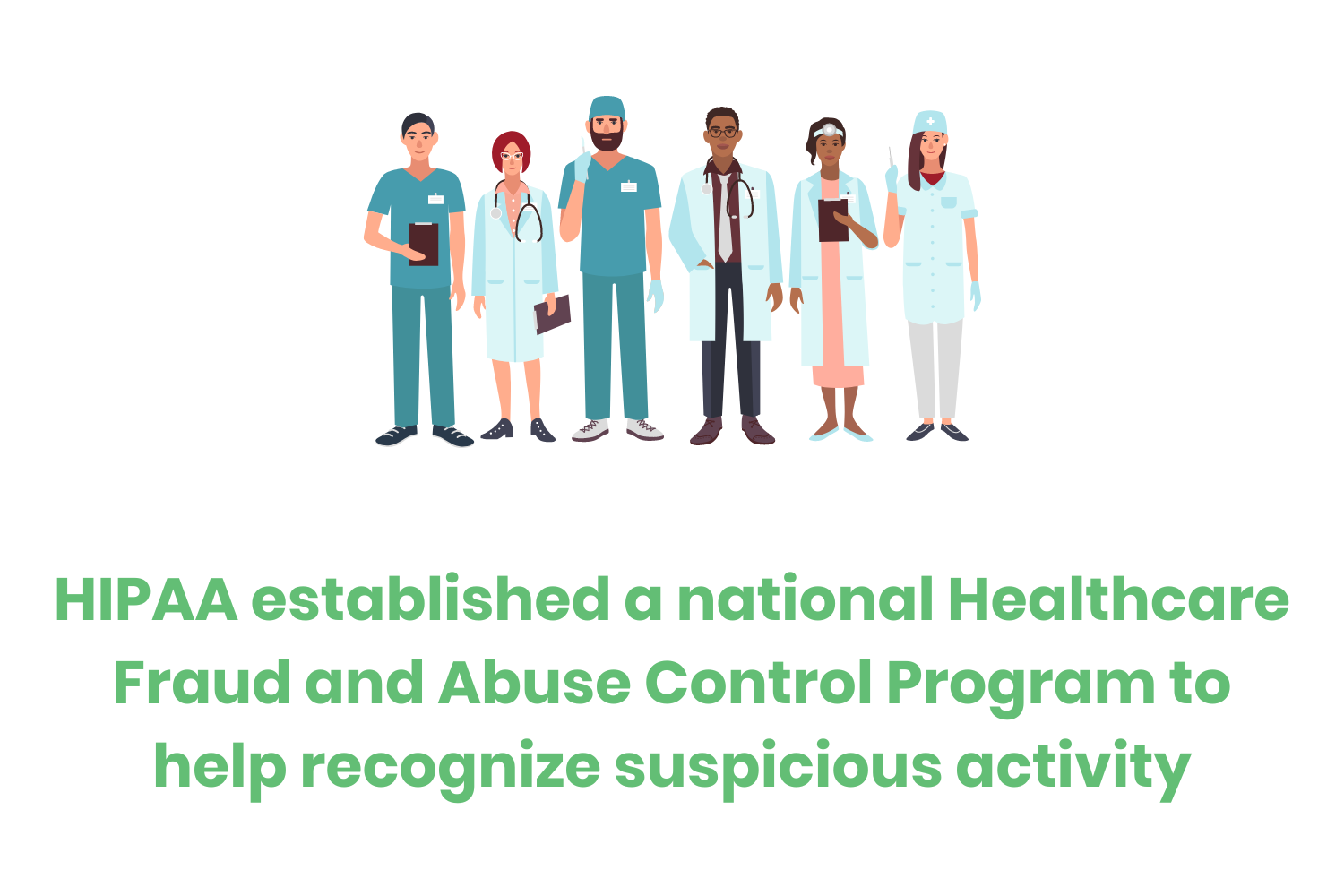The Department of Justice (DOJ) estimates that healthcare fraud generates close to $100 billion a year. In 2021, there were…
With such high numbers of cases and no end seeming to be in sight, how can you avoid becoming a healthcare fraud statistic?
Desperate times can call for desperate measures. Fraud can happen when organizations find it more difficult to collect patient payments or process timely claims. Sometimes claims get denied altogether or insurance coverage for a patient meets its expiration date. No matter the trial or tribulation, oftentimes the root cause of healthcare fraud is poor revenue cycle management.
The idea of revenue cycle management can seem like a daunting undertaking when looking at it by yourself. Yet, putting a focus on your revenue cycle helps risk federal prosecution. Take it from the following organizations that chose to increase their revenue illegally. The penalties are never worth it.
What is healthcare fraud?
No matter where you work in healthcare, it’s important to know what healthcare fraud is and who it affects. Those who deceive the healthcare system for their benefit are guilty of healthcare fraud. To put it simply, anyone can commit this type of fraud and it affects everyone. 92% of fraudsters are American and 66% of healthcare fraud perpetrators are men.
Healthcare fraud schemes can be very difficult to detect. Fraud by medical professionals can mimic legitimate transactions from insurers to the providers. Payments can clear easily due to the high costs of pharmaceuticals and other services. Large financial transactions are less likely to raise any red flags.
Fortunately, the Health Insurance Portability and Accountability Act (HIPAA) does help regulate healthcare fraud. HIPAA established a national Health Care Fraud and Abuse Control Program to help recognize suspicious activity.
This program combats fraud committed against public and private health plans. The following are some real-world examples of healthcare fraud cases.
Table of Contents
Medical Identity Theft
More than 2 million Americans have been victims of medical identity theft, according to the Medical Identity Theft Alliance. According to the Office of the Inspector General (OIG), medical identity theft involves the misuse of someone’s information to submit claims.
In a survey by Accenture, around 24% of health employees say that they know someone who has sold their medical access to an unauthorized outsider. This form of healthcare fraud gives criminals access to healthcare goods, services, or funds.
In the case that a patient’s medical information is not available, someone can also use the beneficiary’s information to create a claim. A beneficiary can also enable an otherwise ineligible person to receive services.
Medical Identity Theft Example 1
In September of 2021, a Las Vegas resident received 144 months in federal prison and a $4,321,590.39 fine for conspiring to defraud the North Carolina Medicaid Program of over 10 million dollars. He and his wife faced heavy penalties from the federal court. His wife received 14 years in prison.
The couple admitted to carrying out the fraud scheme by billing the government with fake home and health services. They were able to get the personal information of recently deceased patients from obituaries. The husband and wife would then use the patient's personal information to “back-bill”.
Billing for Unnecessary Services & Upcoding
This seems a bit self-explanatory, but I’m going to go over it anyway. Billing for unnecessary services or items is exactly how it sounds. By submitting services that were never done, perpetrators can generate larger insurance payments.
This also includes submitting more expensive services that weren’t needed, otherwise known as upcoding. Inaccurate medical coding for a procedure can increase reimbursement for perpetrators.
Imagine going to a doctor for acute minor back pain. However what the doctor wrote in your medical chart was for chronic, or long-lasting severe back pain. Instead of submitting a claim for a routine visit and over-the-counter pain medications, the claim was for a CT scan and a prescription for an opioid which were never given.
These fraudsters place trusting patients at risk of injury or death because of greed. For example, more than 12 million opioid pills are prescribed illegally a year.
Upcoding Example 1
Armando Valdes received 60 months in federal prison for submitting approximately $38 million in fraudulent claims. These claims included infusions of the prescription drug Infliximab, an expensive immunosuppressive. For further context, a single dose can have a price of nearly $10,000.
Valdes would later admit that he never provided a single infusion of the drug, nor did his patients need the medication.
Upcoding Example 2
Another real-world example includes a Miami-Dade psychiatrist who pleaded guilty in 2016 to multiple healthcare fraud-related counts of conspiracy. The psychiatrist had to pay 50 million dollars and received a sentence of more than twelve years in prison. The scheme would include entering false psychiatric diagnoses into the medical records of patients.
The false diagnoses resulted in more than $20 million in false disability payments to various patients between 2002 and 2016.
Kickbacks
Kickbacks happen when a physician or medical provider offers payment to a patient to come into their office. This type of healthcare fraud can also include soliciting referrals from other providers.
If a lab pays a medical provider to encourage patient referrals to their facility, this is a kickback.
It’s true that in some industries, rewarding new sources is good. The idea may even be essential to the business model itself. But things become tricky when involving Federal healthcare programs. These illegal referrals can lead to increased program costs, corruption of medical decisions making, unfair competition and much more.
Kickbacks Example 1
January of 2021, athenahealth Inc. paid over $18.2 million to resolve its civil healthcare fraud case. Allegations arose that the organization paid kickbacks to generate sales of its electronic health records (EHR) product. More specifically, these allegations pointed to three specific marketing programs.
The first marketing strategy was to invite prospective and existing customers to events. These would consist of sporting, entertainment, and recreational events. The problem was that athenahealth would cover all the costs for the customers as a sort of bribe to sign on.
The EHR company also paid kickbacks to existing customers in hopes of identifying and referring new customers. Lastly, athenahealth set deals with competing vendors who were discontinuing their EHR programs. The organization would then pay these companies to provide them with their client referrals based on the value and volume of the practices.
Phantom Billing
Although phantom billing sounds like something out of a 90s horror film, it’s a real type of healthcare fraud that happens often. More specifically, it occurs when patients receive charges for services that weren’t ever rendered.
Phantom Billing Example 1
In July of 2021, Cigna filed a lawsuit against 6 different organizations for phantom billing-related schemes. The organizations cited in the lawsuit included…
Medmarket Consulting, Inc.
Finger Lakes Brace Company
National Healthcare Partners, LLC
USA Medical, LLC
Precision Medical Products, Inc.
Christopher Parks
Cigna alleged that the organizations submitted false claims over or durable medical equipment. The monetary value associated with the alleged false claims totaled roughly $18.7 million.
Phantom Billing Example 2
In January 2015, Benjamin Sabido had to pay $700,545 in fines for billing Medicare for services that weren't provided.
From December 2006 to April 2010, Sabibo submitted claims for physical therapy and nerve conduction studies that fell under the category of phantom billing.
Sabibo submitted claims for physical therapy to Medicare and Medicaid for rendered physical therapy services. However, these services took place because his patients wanted them, not because they benefited from them.
He also submitted Medicare claims for nerve conduction studies. But, his patient charts from those studies didn’t establish that the services were medically necessary and/or rendered.
Double Billing
Double billing is a rather straightforward type of healthcare fraud. It happens when a specific claim gets submitted multiple times…even though the service occurred once.
Double Billing Example 1
In November of 2021, nonprofit organization, BioEnterprise, repaid the Cuyahoga County Convention Facilities Development Corporation (CCCFDC) for a lawsuit that involved double billing.
In a 2019 memo, CCCFDC’s Director called for an audit on BioEnterprise. This request came after he discovered excessive reimbursements for disallowed charges. These charges included a $295 liquor bill for BioEnterprise’s “March Madness happy hour”.
The independent auditor found that BioEnterprise billed state and county taxpayers through CCCFDC and another nonprofit called JumpStart Inc. for the same expenses.
Double Billing Example 2
In November of 2015, Hospital Corporation of America (HCA) settled with the United States Attorney General’s Office on allegations of double billing.
The lawsuit claimed that HCA submitted laboratory claims across four hospitals for a series of tests including…
Direct count low-density lipids (LDL)
Fetal biophysical profiles with non-stress tests
Non-stress tests
The alleged double billing occurred from January 2007 to September 2014. HCA agreed to the over $2 million fine.
Conclusion
Healthcare fraud can happen in different ways. We have only scratched the surface of this federal crime with the few examples we went through.
Medical identity theft allows perpetrators to use existing patient information to generate revenue. Having information as simple as a person’s name, date of birth and address could lead to healthcare fraud.
Billing for unnecessary or expensive services allows professionals or practices to inflate profits. For example, misdiagnosing a patient for the sake of being able to prescribe a more expensive drug or service is another form of fraud.
Kickbacks are a form of healthcare fraud driven by physicians or facilities. Offering payments to patients as an incentive to go to a specific practice can lead to corruption in medical decision-making and more.
There are a few ways to make sure as a patient you do not fall victim to healthcare fraud. When receiving your statement, make sure to take note of any billing items or services that have not been properly documented. Also, be sure to report any medical services added that are not necessary.
This crime has serious costs and consequences. Thus,it’s important to understand what constitutes healthcare fraud. Healthcare entities must hold themselves accountable for identifying any signs of fraud. Otherwise, they’ll face hefty fines or jail time.







